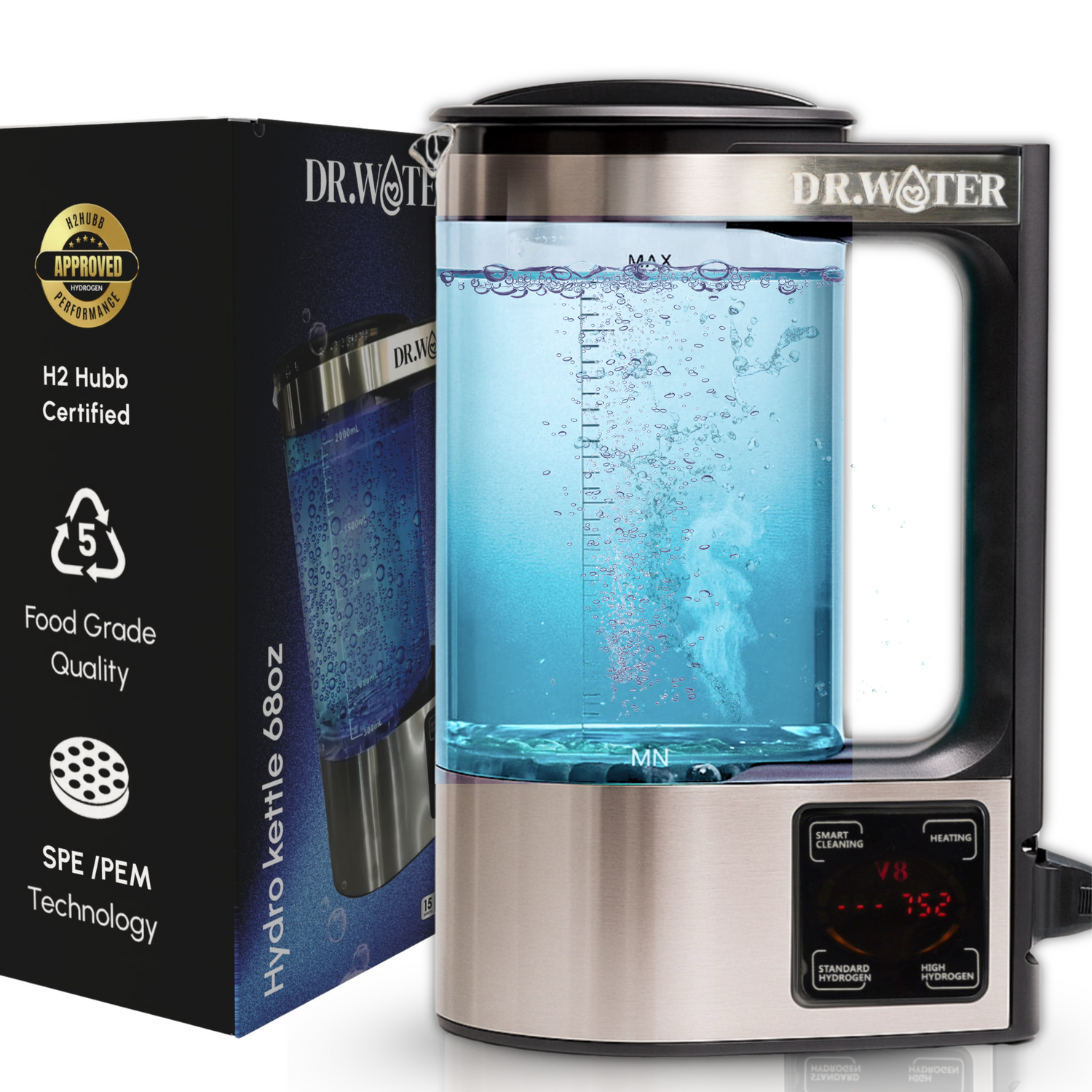
Camping Kettle & Stove: Boil Water & Cook Outdoors
Share
Summary
|
Hot water can turn a rough camping trip into a comfortable one. Whether you are brewing your first coffee at sunrise or preparing freeze-dried meals after a long hike, having a reliable camping hot water kettle makes life much easier. But not every kettle works well outdoors. Some struggle with uneven heating. Others are too bulky for packing. And a few just cannot handle open flames.
This guide breaks down everything you need to know about camping hot water kettles. We’ve reviewed each kettle not just by specs, but by how they actually perform when you’re miles from home.
What to Look for in a Camping Hot Water Kettle?
A good camping kettle needs to balance performance, safety, portability, and durability. Let’s break down the factors that really matter:
1. Heat Source Compatibility
- Always match your kettle to your heat source. Stainless steel and hard-anodized aluminum handles open flames well.
- Silicone collapsible models only work on controlled stoves.
- Electric kettles like the Dr. Water’s HydroKettle work best if you have access to an electric plug point and don’t want the hassle of open flames.
2. Material Construction
- Aluminum heats fastest and is extremely light but is vulnerable to dents and open flame warping.
- Stainless steel lasts longest and resists rust but adds weight. Titanium combines strength and low weight but is expensive.
- Silicone collapsible designs save space but demand careful handling.
3. Portability
- Space matters as much as weight. Backpackers prioritize compact gear. Car campers have more flexibility.
- Look for folding handles, nesting designs, or collapsible bodies based on your packing needs.
4. Water Capacity
- Solo campers might only need 0.7 liters. Groups often need 1.5 liters or more.
- Always consider both drinks and cooking needs when choosing capacity.
5. Heating Efficiency
- Fuel is limited outdoors. Kettles with wide, conductive bases boil faster and use less gas.
- Some models like Jetboil specialize in fuel efficiency under harsh conditions.
6. Safety Details
- Cool-touch handles, stable bases, and secure lids help prevent spills and burns.
- Safety often gets overlooked, but it makes a big difference when you’re dealing with uneven ground or unpredictable weather.
Now that you know what to consider when choosing a camping hot water kettle, let's dive into the top 5 options that combine efficiency, durability, and portability. Here’s a detailed list with key features and pros and cons of every product.
1. Dr. Water’s HydroPitcher (Best for Gentle, Health-Preserving Heating)
The Dr. Water HydroPitcher isn’t like most camping kettles. It caters to campers who want the added, scientifically backed benefits of hydrogen water while heating water gently. It adds antioxidant and anti-inflammatory properties of molecular hydrogen to your regular water for better health. This pitcher allows you to enjoy those benefits if you have access to an electric plug point.
Notable Features
- Internal electric heating keeps water at temperatures that maintain hydrogen saturation without destroying its properties.
- An integrated hydrogen generator continuously infuses molecular hydrogen into the water as it heats, preserving its health properties.
- Highly durable borosilicate glass keeps water warm longer without external heating.
- Spill-proof lid and compact footprint allow it to be safely used even inside a tent or campervan.
- Large 68 oz capacity makes it suitable for larger groups and family use.
It’s an easy choice for anyone not wanting to compromise on health while enjoying the outdoors with your loved ones.
2. GSI Outdoors Halulite Tea Kettle (Best for Ultralight Hikers)
The GSI Halulite is built for people who count every gram but still want hot water fast. Its lightweight yet strong design makes it one of the most trusted kettles among ultralight hikers and solo backpackers.
Notable Features
- Hard-anodized aluminum provides rapid, even heat without the hot spots typical of cheaper models.
- Lightweight (just 7.1 oz), perfect for long treks where every ounce matters.
- A wide base improves stability on small backpacking stoves.
- 1 liter capacity allows one full boil to serve several drinks or meals.
- Foldable handle locks securely during use, making pouring safer.
If lightweight camping gear is your first priority, then this kettle is ideal for your needs.
3. Snow Peak Kettle No.1 (Best for Cooking)
The Snow Peak Kettle No.1 is ideal for minimalist campers who want one tool to handle several tasks. Its wide-mouth design means it doubles as a cooking pot for simple meals, saving valuable space and gear weight.
Notable Features
- Durable stainless steel construction stands up to years of heavy use.
- 30.4 oz capacity balances solo and small group cooking needs.
- Wide lid opening makes it easy to stir, serve, or clean.
- Foldable handles nest flat against the body for packing.
- Safe for camp stoves and low, well-managed open flames.
This is the perfect choice for anyone wanting to enjoy cozy meals on an open flame.
4. Sea to Summit X-Pot Kettle (Best for Saving Space)
Space is often at a premium when you’re deep in the backcountry forests. The Sea to Summit X-Pot Kettle’s collapsible silicone design gives you serious cooking capacity without taking up much room. It’s lightweight and collapses when not in use, saving you the much needed space.
Notable Features
- 1.3-liter capacity handles larger cooking needs while staying ultralight.
- Silicone walls collapse flat for storage, freeing up pack space.
- Hard-anodized aluminum base transfers heat evenly.
- A clear locking lid doubles as a built-in strainer.
- Food-grade, BPA free silicone is safe for stove-top heating but must not touch open flame.
It’s perfect for hikers who love going on long trails and need space-saving solutions for additional gear.
5. Jetboil Flash Cooking System (Best for Quick Boils)
The Jetboil Flash system is built for speed and fuel efficiency. If your top priority is fast hot water with minimal fuel waste, especially in cold or windy conditions, Jetboil delivers.
Notable Features
- An integrated burner and insulated cooking cup bring water to a full boil in around 120 seconds.
- Push-button ignition simplifies lighting even in poor weather.
- Heat indicator changes color when boiling is reached.
- The entire system packs into itself for compact storage.
- Excellent wind resistance compared to traditional stove setups.
It’s an excellent choice if you frequently camp in colder areas and want a super quick boiling solution.
Now, let’s look at some of the features most buyers overlook when buying a camping hot water kettle.
What to Keep in Mind While Buying a Camping Hot Water Kettle
Even after you choose a kettle, there are small details that make a huge difference once you’re actually using it outdoors. These are often overlooked but can impact your camping experience:
- Handle Design: Some handles fold flush, but heat up during boiling, making it hard to pour without gloves. Look for coated or heat-resistant handles that stay cool.
- Lid Fit: Loose-fitting lids fall off easily when pouring or during transit. Kettles with locking or tension-fit lids prevent accidental spills and heat loss.
- Stability: Wider, lower kettles sit better on uneven surfaces. Tall, narrow designs tip over easily if you’re cooking on unsteady camp stoves or rocks.
- Cleaning & Maintenance: Hard water stains build up fast outdoors. Stainless steel and hard-anodized aluminum are easier to clean thoroughly. Models with wide mouths allow full access for scrubbing without special brushes.
- Backup Boiling Strategy: If your primary fuel source runs out or malfunctions, will your kettle still work over an open fire or alternative heat? This flexibility can be a trip-saver on longer expeditions.
Now, let’s check out some tips to maintain your camping hot water kettles.
Bonus Maintenance Tips for Longevity
A camping kettle takes more abuse than your kitchen gear. Exposure to soot, moisture, rough handling, and extreme temperatures can shorten its life quickly if not cared for properly.
These tips will help extend the lifespan of your kettle, no matter which model you choose:
- Clean After Every Trip: Even if it looks clean, minerals from hard water can build up. Wash with mild soap and warm water after each use. Avoid abrasive scrubbers on anodized aluminum or silicone parts, as they can scratch protective surfaces.
- Dry Thoroughly Before Storage: Always air-dry completely before packing your kettle away. Trapped moisture, especially in folding handles or between lid seams, can lead to mold or corrosion over time.
- Avoid Direct Flame (Unless Designed for It): Many kettles, especially those with silicone or thin aluminum bodies, are not made for open fires. Overheating can warp metal, degrade silicone, and weaken handle joints. Use controlled heat sources like camp stoves unless your kettle is specifically rated for open flame.
- Remove Soot Build-Up Promptly: If you use your kettle over a wood fire, soot will collect on the base. Wipe it off with a damp cloth once cooled. Long-term build-up can affect heat transfer and make it harder to boil water efficiently.
- Store with Lid Open: When storing for long periods, keep the lid slightly open to prevent trapped moisture. This is especially important for kettles with seals or gaskets, which can degrade if kept sealed in humid conditions.
- Inspect Moving Parts Regularly: For kettles with foldable handles or locking lids, check hinges and locks occasionally for wear or loosening. A damaged handle or loose lid can make pouring dangerous in the field.
Conclusion
For some, a dedicated camping kettle is essential. If you frequently make hot drinks or meals, or travel in cold climates where hot water is part of your daily routine, investing in a purpose-built kettle can quickly pay off. Your camping style determines which kettle works best. Take your fuel source, trip length, pack space, and group size into account.
A kettle may seem like a small piece of gear, but the right one adds comfort and simplicity to every campsite. The Dr. Water HydroPitcher caters to health-focused campers who want hydrogen-infused water outdoors. If health is your top priority, then try out the HydroPitcher today!
Frequently Asked Question
Q: How can I prevent limescale buildup in my camping kettle when using hard water?
A: Limescale forms due to high mineral content in hard water. To minimize it, use filtered or bottled water when possible. Regular descaling with a 50/50 vinegar-water solution can also help. Always empty the kettle after each use to prevent mineral concentration.
Q: Is it safe to use acidic solutions like vinegar or lemon juice to descale my camping kettle?
A: Yes, using diluted white vinegar or lemon juice is a safe and effective method to remove limescale. Simply mix equal parts vinegar and water, bring it to a boil, then let it sit for 30 minutes before rinsing thoroughly. This method is commonly recommended for its simplicity.
Q: Can using a glass or steel marble inside my camping kettle help prevent limescale buildup?
A: Some suggest placing a marble inside the kettle to attract limescale, making it easier to clean. While this may work for some, its effectiveness in camping kettles is debated. It’s best used in combination with regular descaling methods.

